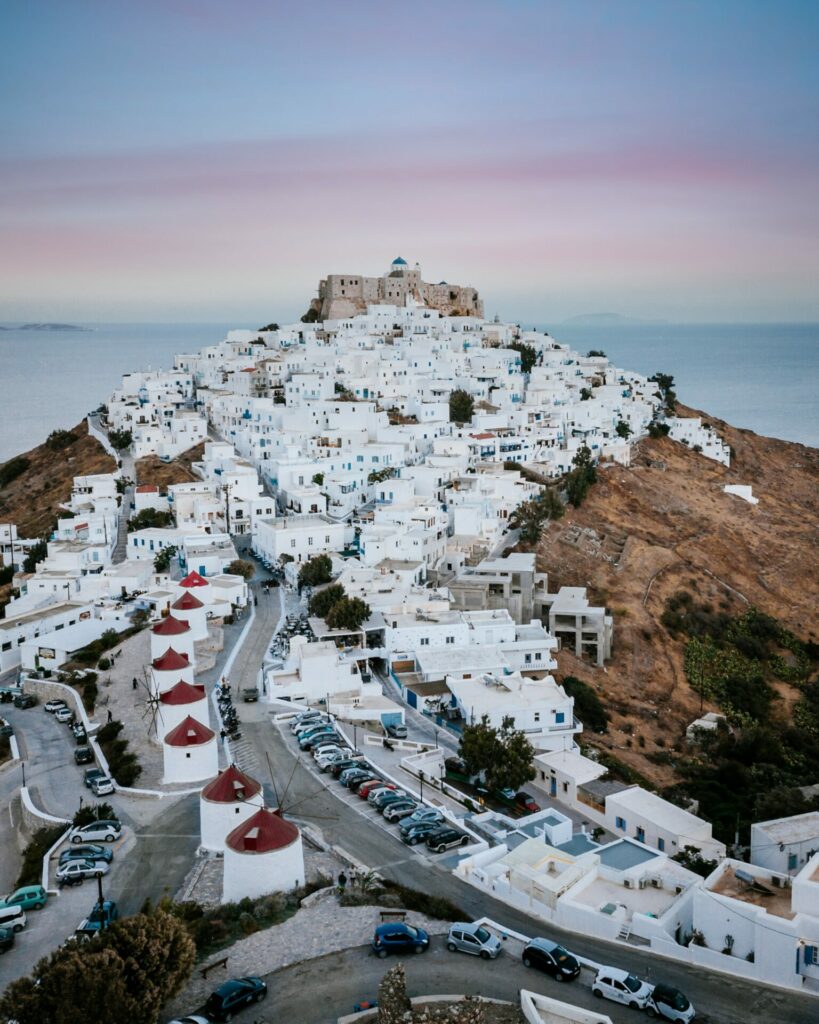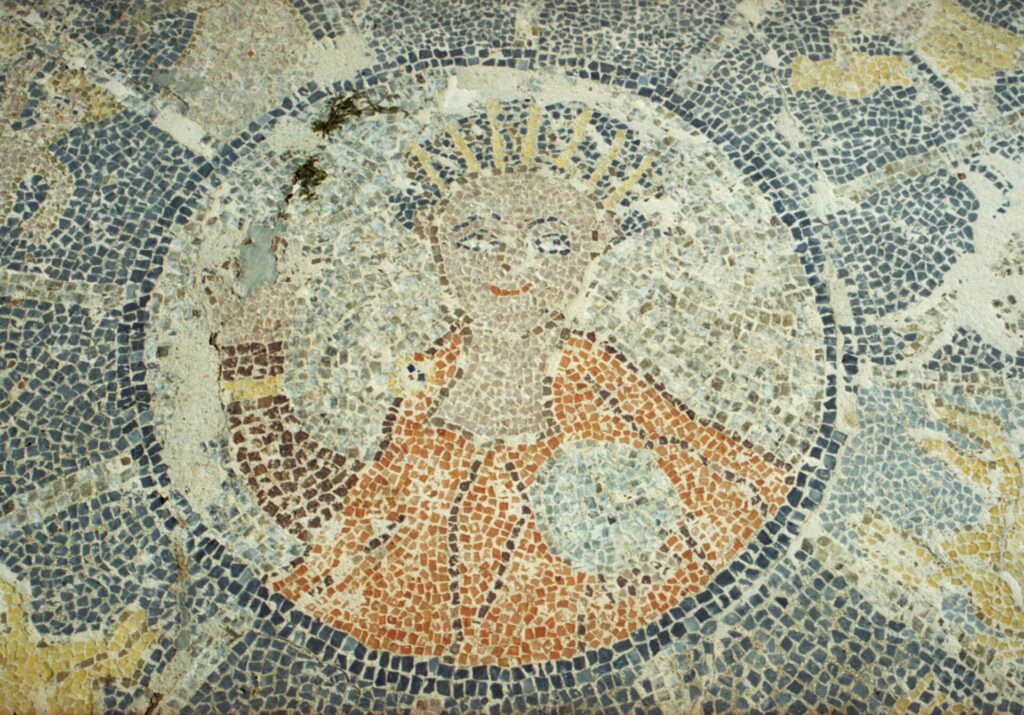Astypalaia is the most western island in the Dodecanese Islands. Astypalaia has a history that is centuries old, villages with some of the most beautiful white houses in Greece, sunny beaches, and dramatic views from its castle. The shape of the island of Astypalaia is unique because it is connected by a narrow landmass that makes the island look like a butterfly from a bird’s eye view. The western part of Astypalaia is called Mesa Nisi, and the eastern side is called Exo Nisi.

What to see in Astypalaia
The main town on the island of Astypalaia is called “Chora.” The most imposing monument of the city is the Venetian Guerini Castle, which was built in the 13th century. The three-story houses which were built on the outer grounds of the castle are unique because the walls of these houses double as the castle wall. Their narrow windows doubled as battlements.
Panagia Portaitissa Church
It’s worth visiting the Panagia Portaitissa Church, which was built in the 18th century and takes its name from a famous icon on Mount Athos. The church is found right below Astypalaia’s castle and is known as one of the most stunning churches in all the Dodecanese. Inside the church is a gilded iconostasis with wood carvings. Just next to the Panagia Portaitissa Church is the island’s Ecclesiastical Museum.
The biggest celebration on the island is the Feast Day of the Virgin Mary, which takes place on August 15th. The celebrations last for 3 days and are capped off by a special local sports event known as “Koukania.” During Koukania, families try to feed each other yogurt while blindfolded, and the village participates in a game of tug of war.
The Windmills of Skala:
Chora in Astypalaia also has 8 famous windmills. The windmills’ roofs turn according to the wind direction.
Beaches of Astypalaia
When visiting the island of Astypalaia, it’s a must to visit the beaches of Agios Konstantinos, Vatses, Plakes, Kaminakia, Agios Giannis, Panormos, Pachia Ammos, Pera Gialos and Livadia. If you get the chance, it’s worth taking a short boat journey to the beaches of the nearby islands of Koutsomiti and Syrna.
Astypalaia’s History
In the Byzantine times, the Dodecanese was rife with pirates. As a result of the pirates, Astypalaia’s residents gradually moved away from the water and started building inland. The rulers of the island slowly decided to construct more castles in order to have better protection.
When the Ottomans came, Astypalaia was still self-governed. They fought in the Greek Revolution of 1821, but remained under Turkish control like the other islands in the Dodecanese. Next, the Italians controlled Astypalaia. The island finally became a part of independent Greece in March of 1948.

Churches in Astypalaia
The island of Astypalaia has 4 small villages: Chora, Analipsi (or Maltezana), Vathi, and Livadia. These villages are known for their characteristic small churches. When you move outside of these villages, you will also find churches scattered in the rocky countryside. Like many of the villages with white houses in Greece, the churches are also white and blue.
Hiking in Astypalaia
Much like the other Dodecanese Islands, Astypalaia is crisscrossed with walking paths. For the more adventurous, you can walk these footpaths between small villages, to chapels, and to secluded beaches.
How to get to Astypalaia
A ferry runs regularly between Astypalaia and the Piraeus port in Athens. The trip’s duration is about 9 hours and ferry runs about 3 times per week. It is also possible to get to Astypalaia from Naxos, Amorgos, Paros, Donoussa, Rhodes, and Tilos.

The Stalactites and Stalagmites at Negrou
For the adventure-minded, we recommend visiting the Cave of Negrou at Vatses, known for its stalactite and stalagmite formations. From the waterfront at Vatses Beach, you can get to the cave by hiking for about 45 minutes. Alternatively, you can reach the Cave of Negrou by boat.
Pace of Life in Astypalaia
Life in Astypalaia is rather quiet. There aren’t any big clubs like in Mykonos or Santorini, so you won’t hear any loud music at night. There is some nightlife in Chora, but you are more likely to find homely coffee shops and family-run taverns. If you’re looking for somewhere to relax and unwind, Astypalaia is the ideal location for you!









